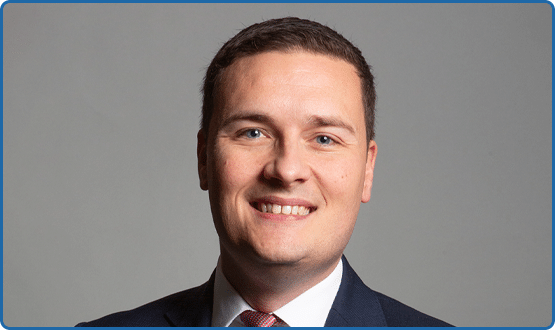Questions in the House About DG Role
- 21 November 2002
Mark Todd, Labour MP and a former IT director, has told E-Health Insider that he believes the current management structure for the National Programme for IT in the NHS "appears rather cloudy" and "is not the optimum arrangement". He says greater clarity over lines of accountability and leadership may be needed.
The former head of IT for Longman Group, spoke to EHI after tabling a series of parliamentary questions about the exact relationship between the new director-general for NHS IT, Richard Granger, the NHS Information Authority (NHSIA) and the Department of Health’s Information Policy Unit (IPU).
The precise role and responsibilities of Mr Granger continues to raise a lot of questions. After over two months in post the question is how is he putting down his stamp on the NHS IT programme?
Mr Todd told EHI that as an IT director he had learned two house rules: "Leadership and accountability need to be absolutely crystal clear. To achieve progress in this area you do need a very clear executive lead, and that has to be built around clear lines of accountability."
In a recent Parliamentary Question, Mr Todd asked health secretary, Alan Milburn, to make a statement on "the personal responsibilities of the director general of NHS Information Technology", "his responsibility for the NHS Information Authority" and "his role in directing the implementation of NHS information technology at regional level".
Health minister Hazel Blears responded: "Richard Granger has been appointed as director general of information technology in the NHS and is responsible for delivering the national programme for IT."
She added that the programme had four key deliverables: electronic appointment booking, an electronic care records service, an electronic prescribing service and an underpinning IT infrastructure.
However, on the vital relationship between the director general and the NHSIA and IPU her answer was more ambiguous, leaving open the question of who ultimately calls the shots: "Richard Granger will be working closely with the NHSIA, the NHS Purchasing and Supply Agency and the Information Policy Unit in the Department of Health. Working together and maintaining strong working relationships will be important for all parties."
What Ms Blears’ response failed to clarify was which party had seniority over the others and whether Mr Granger would have the authority to direct the activity of the NHSIA and IPU. Without such clarity there is a risk of confusion and turf wars which could make the national programme hard to deliver.
In reality the picture is even more complex. Beyond the immediate triumvirate of NHS IT bodies, there is a further set of complex relationships, and sometimes competing agendas, to be accounted for among the raft of other government and departmental agencies that have a hand in IT policy, government procurement or NHS modernisation.
These include, but are not limited to: the Office of Government Commerce, the Office of the e-Envoy, the NHS Modernisation Agency, NHS Direct, the NHS Shared Services Authority, the NHS Purchasing and Supplies Agency, and the NHS Prescriptions Pricing Authority.
The director general’s writ does not, for instance, extend to NHS Direct which remains quite separate from the national programme and outside the remit of the NHSIA and IPU.
"This is not the optimal framework for delivering optimal change in IT services," Mr Todd told EHI. "The difficulty with dispersing authority is that it just takes one or two people not on board to make it a lot harder to achieve."
Mr Todd, however, advised caution before judging current arrangements. "It may well mean that progress is not as rapid as one might like. My reaction was: let’s wait and see – you can find that sub-optimal arrangements can work."
Another apparent ambiguity in the current arrangements is the relationship between the director general and the chief information officers (CIOs) at each strategic health authority (StHA), who will be responsible for "producing local delivery plans that will link sound local investment plans on IT into the national arrangements and framework."
According to Ms Blears the DG will work through StHAs to ensure that their focus is on the key deliverables for the national IT programme. "He will work with the chief executives and chief information officers at each StHA to ensure that progress is maintained against the critical path for implementation," said Ms Blears.
Crucially, she added: "The chief information officers will report to both their own chief executives and to Richard Granger." This concept of dual accountability for CIOs could prove tricky when the going gets tough. Employed as senior executives of StHAs each CIOs principal loyalty will logically lie with their chief executive and StHA that employs them.
This could place CIOs in an invidious position if a conflict of interest arises between the local priorities of the StHA and the requirements of the national programme.
When the DoH advertised the post of the DG as the "IT challenge of the decade", it really wasn’t exaggerating – and the IT may yet prove the easy bit.




